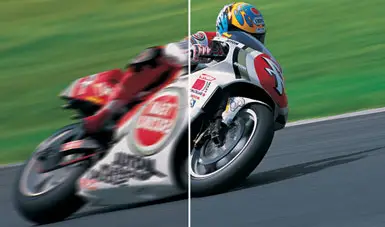Motion blur is a parameter that is not specified by TV manufacturers. This is quite an important parameter, but they do not like to show it, all televisions have a blurred image some more others less. The presence of blur affects the quality of the display, the higher quality display, the less blurry it will be. This parameter is taken into account when testing televisions, and this parameter significantly affects the quality of the image.
Blur occurs when an object moves on the screen. The main reason for the blurred image, not the ability of pixels to instantly change their brightness, there remains a residual image, and the object has already moved to other pixels and is displayed there. As a result, the image is slightly blurred, not critical, but unpleasant.
How you can measure the blurriness of an image
It is quite simple, you can lay out a video with a moving object in frames, and then overlay the frames on one picture and you will see the blurriness of the image.
Even more blur is produced when you turn on various functions designed to improve image quality by creating additional image frames, this is especially noticeable when viewing an image with a frame rate of 24 frames per second with the inclusion of additional frames, such as 60 frames per second.
It is impossible to create a new frame that exactly matches the direction of motion of the subject, in which case there is blurring from screen imperfections and framing errors.
TVs with more modern screens have minimal response time, and since such screens are in TVs of 8 and 9 series or individual series, such as OLED TVs, blurring is minimal in such TVs.
Which televisions have the least blur
The more advanced the matrix of the TV screen, the less blurry the viewer will see. OLED displays have undoubted advantages due to the use of organic LEDs in the production of matrices (they have a high response speed). The image delay on the screen is only about 0.3 milliseconds, which reduces the visibility of the residual image to less than 80%. Complete disappearance of the image occurs after 2 ms.







